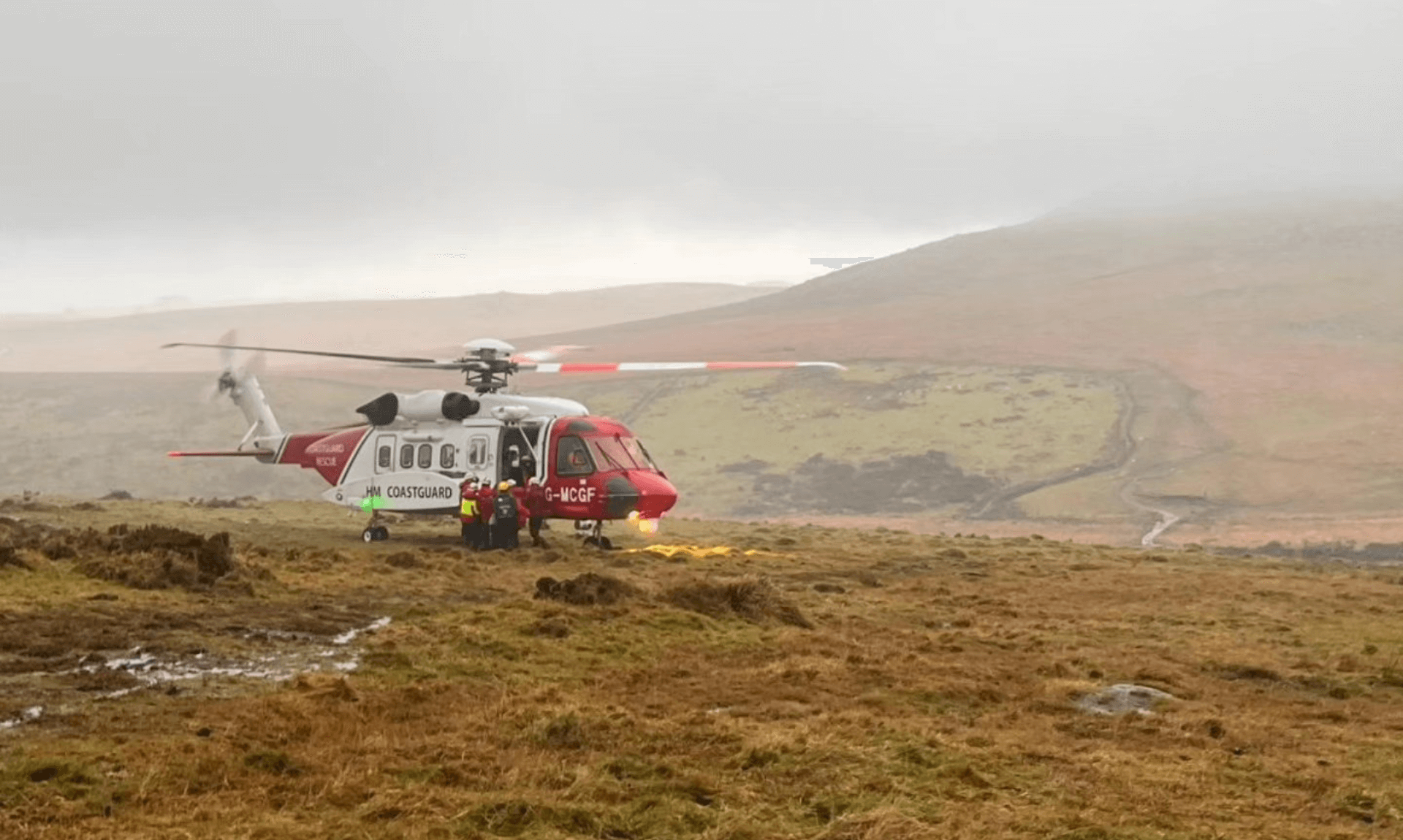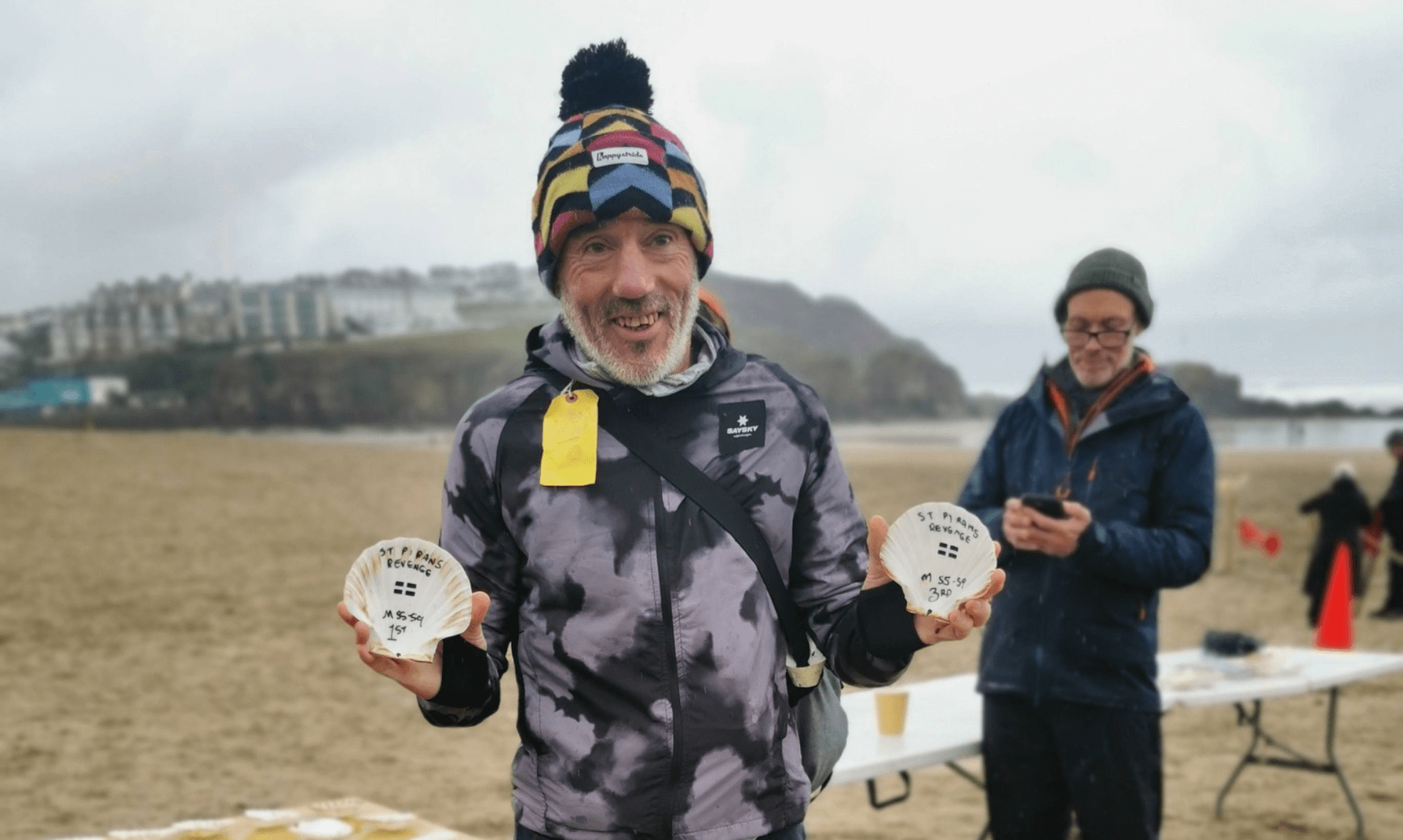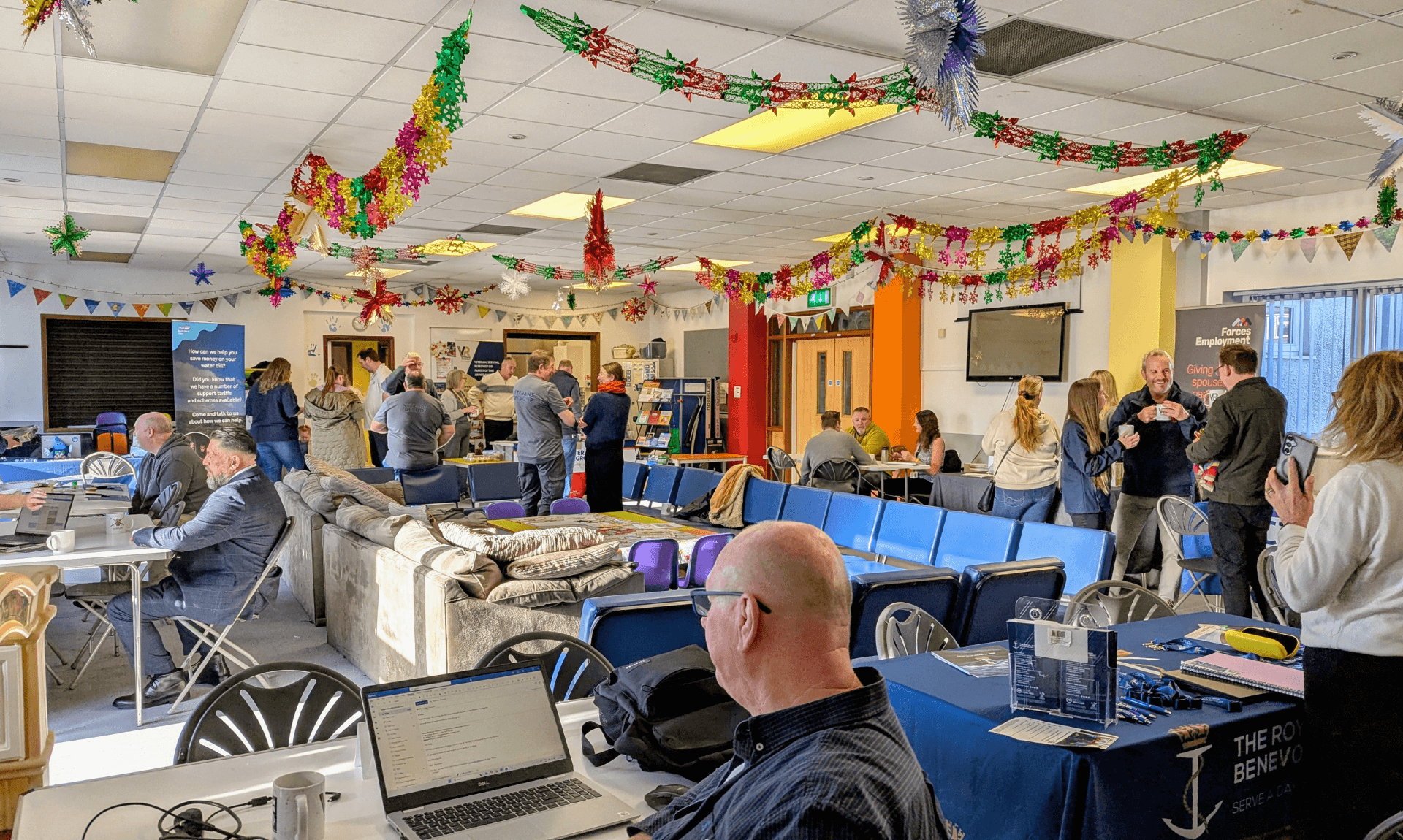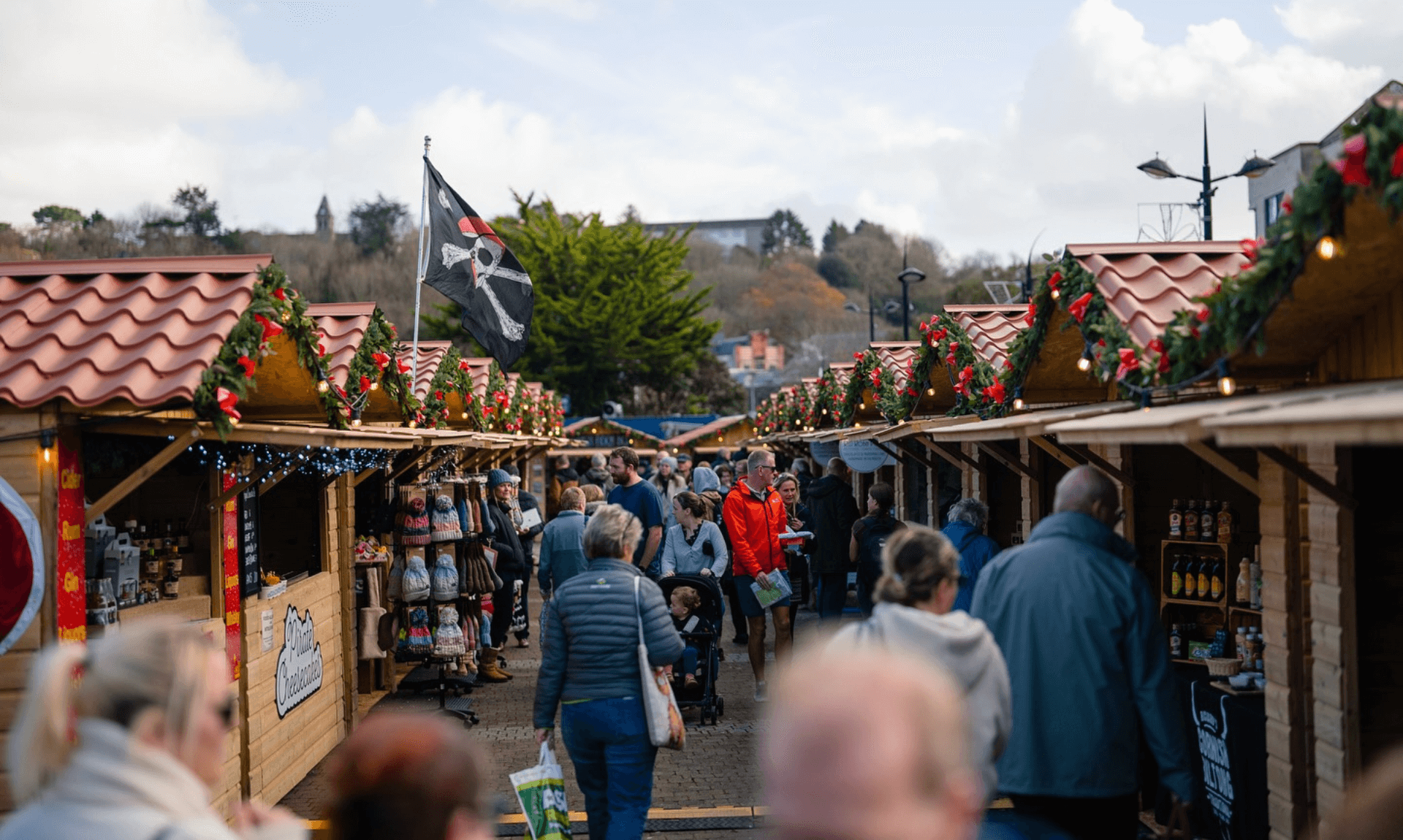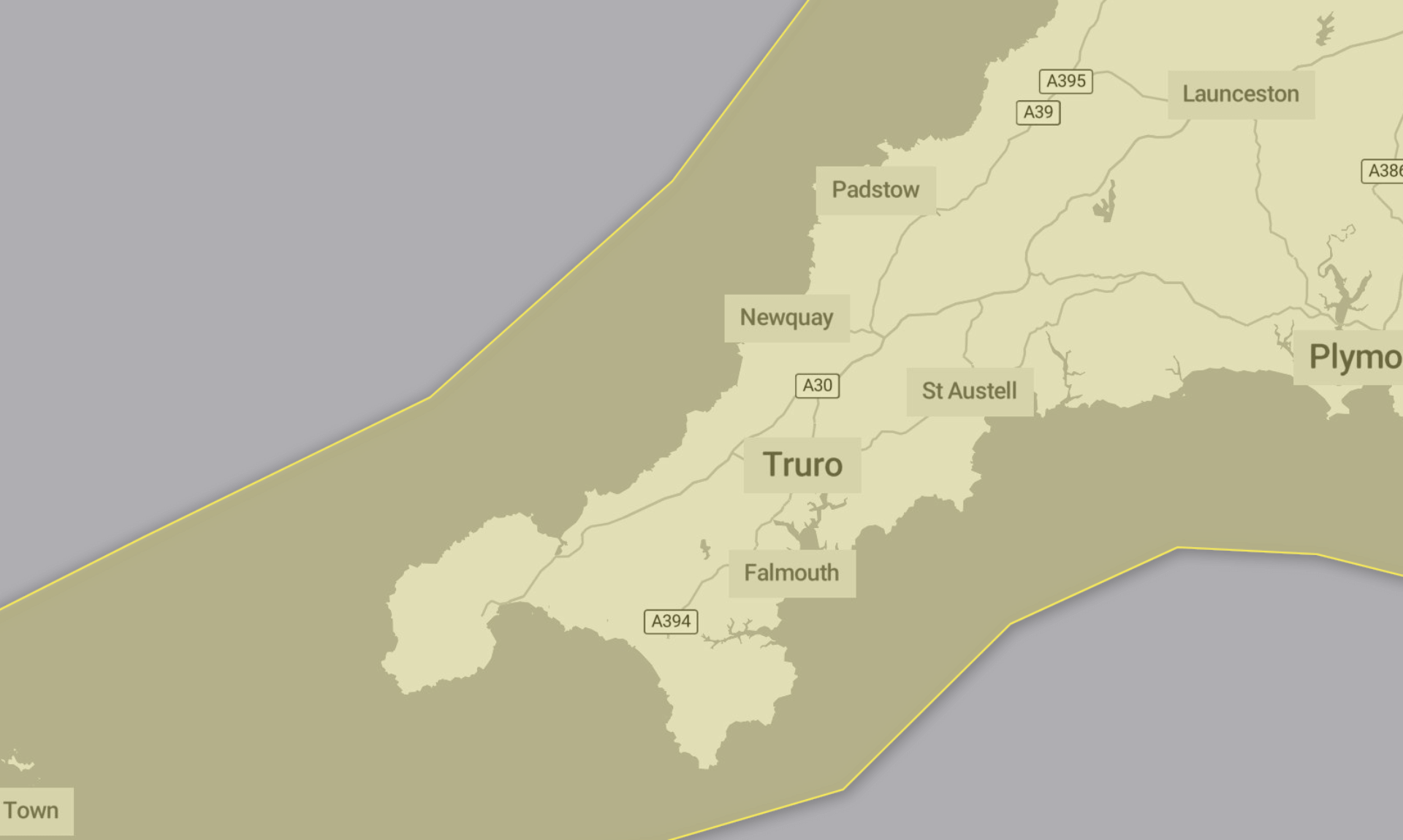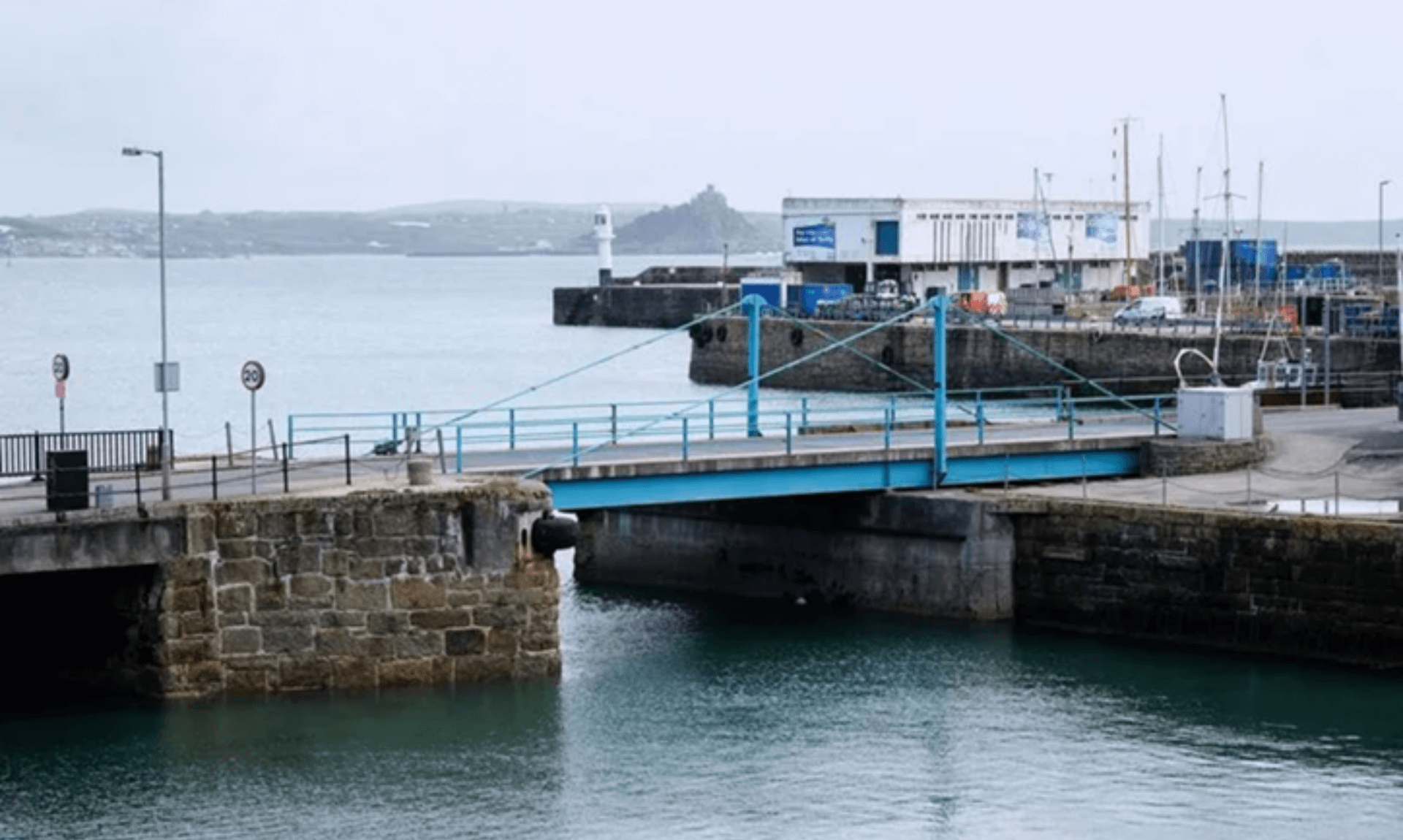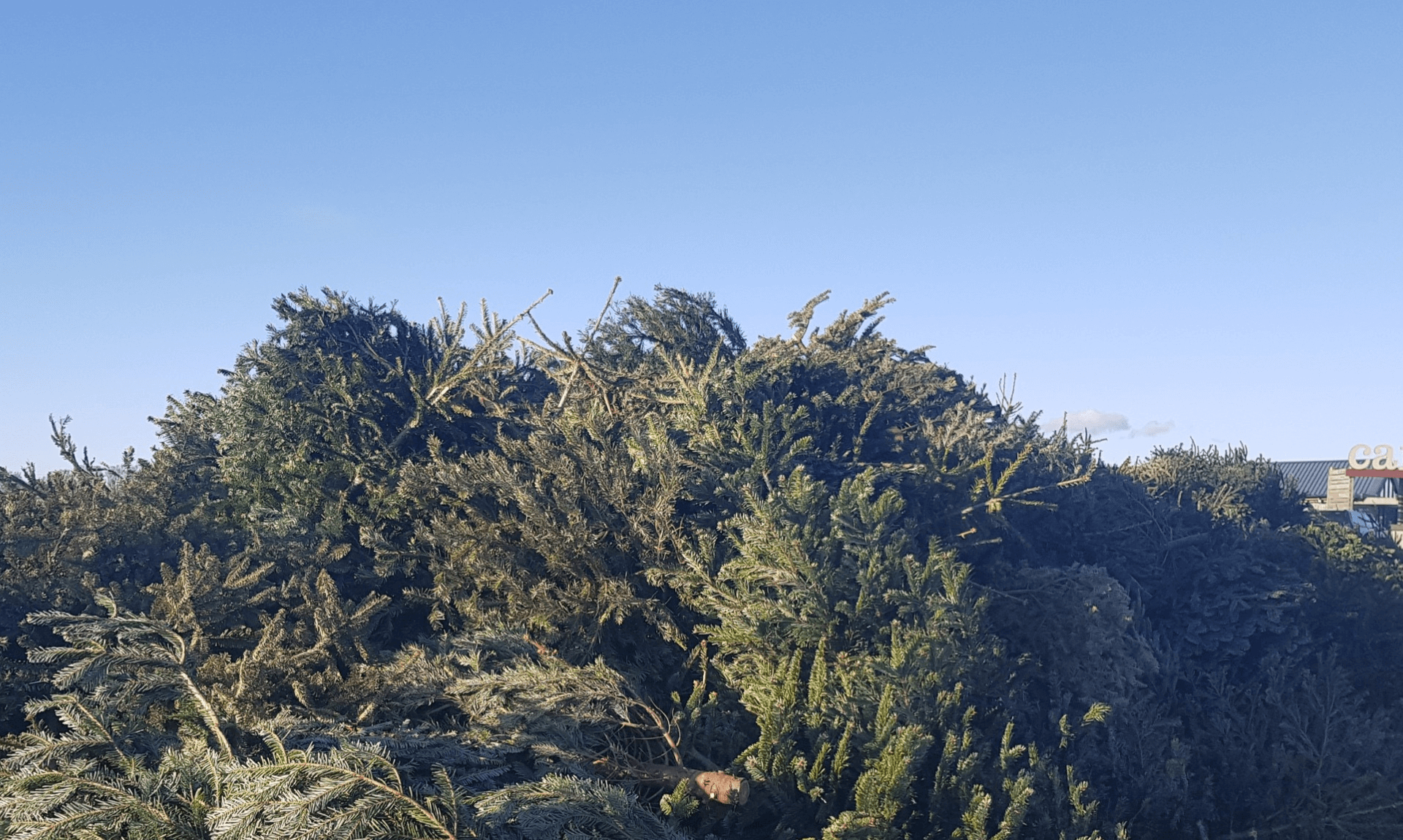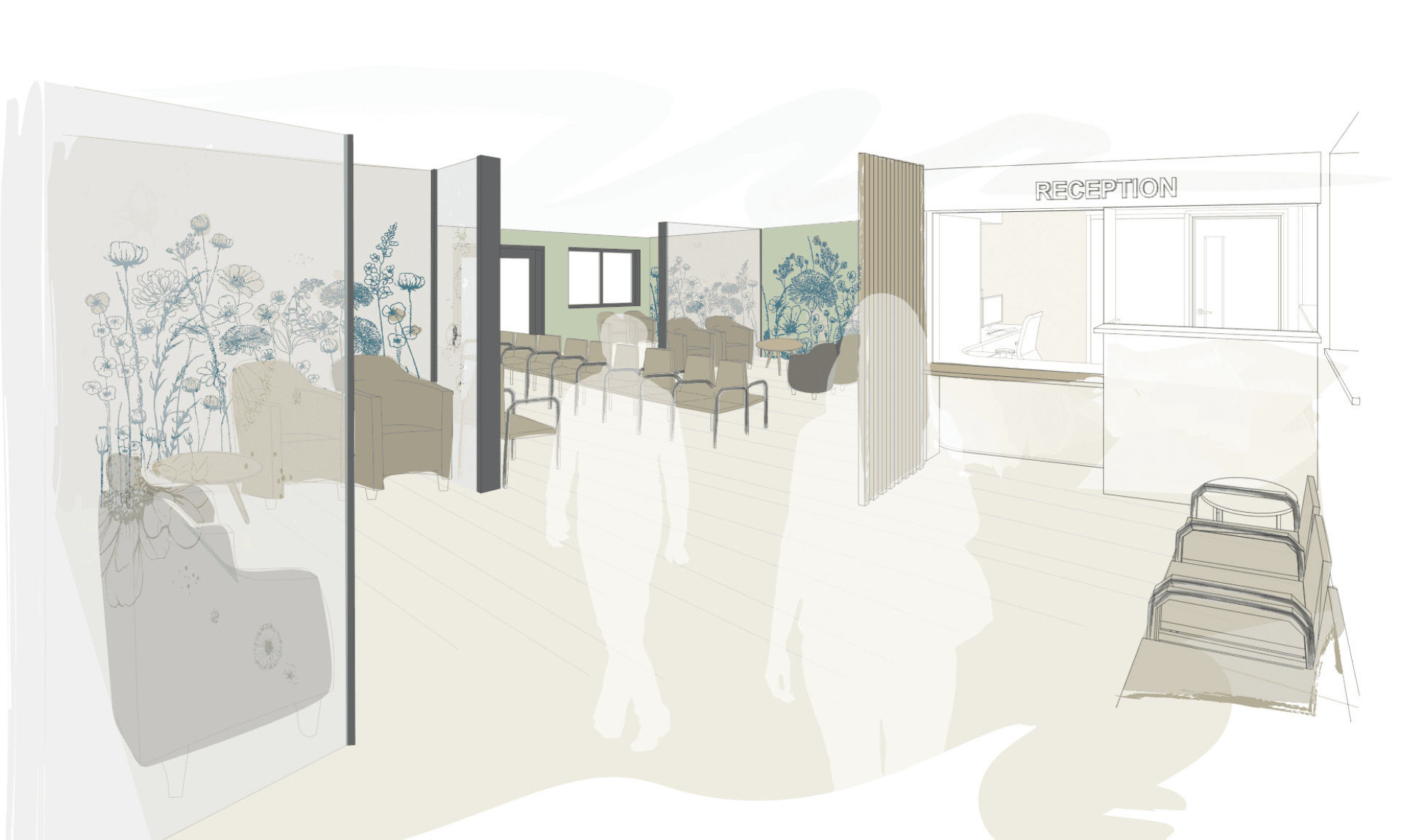81 Must See Castles & Historic Landmarks in Cornwall
Cornwall is a land of legends, mystery, and history. From mighty medieval castles standing guard over rugged cliffs to prehistoric stone circles that predate the pyramids, the county is a treasure trove of historic landmarks. Every hill, every coastline, every hidden valley whispers stories of ancient kings, daring smugglers, fierce battles, and forgotten civilisations.
Whether you’re fascinated by the Arthurian myths of Tintagel Castle, the grandeur of St Michael’s Mount, the lost villages of Bodmin Moor, or the eerie remains of Cornwall’s industrial past, this guide takes you on a journey through Cornwall’s 81 most fascinating historic sites.
Some of these landmarks are famous, others are hidden gems – forgotten ruins tucked away in remote moorland, secret smugglers’ paths leading to hidden coves, and ancient sacred wells where pilgrims once sought miracles. Whether you’re a history enthusiast, a curious traveller, or a lover of Cornwall’s wild beauty, these sites will take you back in time and show you a side of Cornwall that many visitors never see.
So step into history, walk where Viking raiders, Cornish miners, Celtic warriors, and Tudor kings once stood, and prepare for an unforgettable journey through time. These are the most incredible historic landmarks in Cornwall – you won’t want to miss a single one.
Tintagel Castle – The Legendary Home of King Arthur
Location: Tintagel, North Cornwall
Best For: Mythology lovers, coastal views, and medieval history
Opening Times: Open year-round (seasonal hours apply)
Entry Fee: Charges apply (English Heritage members enter free)
Why Visit?
Tintagel Castle is one of Cornwall’s most famous historic sites, largely due to its links to the legend of King Arthur and Merlin. The castle sits dramatically on a clifftop, with the remains of medieval fortifications and stunning views over the Atlantic Ocean. The site is managed by English Heritage, which has introduced a spectacular footbridge that reconnects the castle ruins with the mainland – just as it would have been in the medieval era.
Things to See & Do:
- Walk across the Tintagel Castle Bridge, a modern engineering marvel.
- Explore the medieval Great Hall ruins and ancient courtyards.
- Visit Merlin’s Cave beneath the castle, accessible at low tide.
- Discover early Dark Age settlements on the headland.
- Stop by the English Heritage Visitor Centre to learn more about the castle’s history.
Local Tip:
Visit early in the morning or late in the afternoon to avoid peak crowds.
St Michael’s Mount – Cornwall’s Island Castle
Location: Marazion, near Penzance
Best For: Island explorers, coastal walks, and romantic castle settings
Opening Times: Open seasonally (check tide times)
Entry Fee: Charges apply (National Trust members enter free)
Why Visit?
St Michael’s Mount is one of Cornwall’s most iconic landmarks – a castle-topped tidal island linked to the mainland by a causeway. The island has been home to the St Aubyn family since the 17th century and has a history dating back to the Norman period. The castle, gardens, and village provide a unique historical experience with breathtaking views over Mount’s Bay.
Things to See & Do:
- Walk across the historic causeway at low tide or take a boat at high tide.
- Explore the medieval castle, with its grand rooms and historical artefacts.
- Visit the subtropical gardens, home to exotic plants that thrive in Cornwall’s mild climate.
- Learn about the legend of the giant Cormoran, who was said to have lived on the mount.
- Enjoy fresh seafood and local treats at the Island Café.
Local Tip:
Check tide times before visiting to plan whether you want to walk or take a boat ride.
Pendennis Castle – A Tudor Fortress Overlooking Falmouth
Location: Falmouth, South Cornwall
Best For: Military history enthusiasts, families, and coastal views
Opening Times: Open year-round (seasonal hours apply)
Entry Fee: Charges apply (English Heritage members enter free)
Why Visit?
Built by King Henry VIII in the 16th century, Pendennis Castle was designed to protect England from French and Spanish invasions. It played a key role in both the English Civil War and World War II. With its stunning coastal setting, gun batteries, and interactive exhibitions, Pendennis Castle offers a fascinating glimpse into Cornwall’s military history.
Things to See & Do:
- Walk along the castle ramparts for panoramic views of Falmouth Bay.
- Explore the Tudor keep and artillery fortress.
- Visit the WWII exhibition, which details Cornwall’s role in wartime defence.
- Watch live cannon-firing demonstrations during special events.
- Stop by the castle tearoom for Cornish cream tea.
Local Tip:
Pendennis often hosts reenactment events, so check the calendar before your visit to catch one.
Restormel Castle – A Perfectly Circular Norman Ruin
Location: Near Lostwithiel, Mid Cornwall
Best For: History lovers, photographers, and peaceful countryside walks
Opening Times: Open seasonally
Entry Fee: Charges apply (English Heritage members enter free)
Why Visit?
Restormel Castle is one of the best-preserved Norman motte-and-bailey castles in Cornwall. It’s famous for its perfectly circular design, built in the 13th century as a luxurious residence rather than just a defensive fortress. Surrounded by peaceful countryside, this castle offers a tranquil step back in time.
Things to See & Do:
- Climb to the top of the walls for panoramic views over the valley.
- Explore the remains of the great hall, kitchens, and chapel.
- Walk through the woodland trails nearby.
- Enjoy a picnic in the castle grounds.
Local Tip:
Restormel is particularly beautiful in spring, when the surrounding woodland is filled with wildflowers.
Launceston Castle – A Norman Stronghold with Stunning Views
Location: Launceston, North Cornwall
Best For: Norman history enthusiasts, dramatic landscapes, and town explorers
Opening Times: Open seasonally
Entry Fee: Charges apply (English Heritage members enter free)
Why Visit?
Launceston Castle, built by the Normans in the 11th century, was once the administrative centre of Cornwall. Its striking motte-and-bailey design and commanding hilltop position make it an impressive site. Visitors can climb to the top of the 13th-century tower keep for breathtaking views over Launceston town and the Tamar Valley.
Things to See & Do:
- Climb the high tower for one of the best views in Cornwall.
- Walk the castle walls and imagine what life was like for Norman soldiers.
- Explore the museum exhibit inside the keep.
- Wander through Launceston town, which has plenty of historic buildings and local shops.
Local Tip:
Combine your visit with a trip to the nearby Hidden Valley Discovery Park for a fun day out.
Chysauster Ancient Village – Cornwall’s Prehistoric Past
Location: Near Penzance, West Cornwall
Best For: Prehistoric history lovers, archaeology fans, and nature walks
Opening Times: Open seasonally
Entry Fee: Charges apply (English Heritage members enter free)
Why Visit?
Unlike castles, Chysauster is a 2,000-year-old Iron Age settlement that offers a fascinating glimpse into Cornwall’s ancient past. The stone courtyard houses found here are some of the best-preserved examples in Britain. The site is set in a peaceful rural landscape, perfect for walking and exploring.
Things to See & Do:
- Walk through the stone ruins of ancient houses.
- Learn about the Cornish Celts who lived here.
- Enjoy scenic moorland walks surrounding the site.
- Look out for rare wildlife and Cornish wildflowers in spring and summer.
Local Tip:
Visit in the late afternoon for a quieter experience and beautiful golden light over the ruins.
Caerhays Castle – A Hidden Gem by the Coast
Location: Near Gorran Haven, South Cornwall
Best For: Garden lovers, castle explorers, and history buffs
Opening Times: Spring only (usually February – June)
Entry Fee: Charges apply
Why Visit?
Caerhays Castle is a 19th-century Gothic Revival castle set within a magnificent 470-acre estate, famous for its stunning gardens filled with rare plants and flowers. Although the castle itself is not as ancient as some of Cornwall’s other fortresses, it sits on a site with a rich history, dating back to the Iron Age.
Things to See & Do:
- Wander through the world-famous gardens, home to one of the UK’s best camellia collections.
- Take a guided tour of the castle, still home to the Williams family.
- Walk down to Porthluney Cove, a quiet beach right beside the estate.
Local Tip:
Visit in spring to see the gardens in full bloom.
St Mawes Castle – Henry VIII’s Coastal Fortress
Location: St Mawes, South Cornwall
Best For: History lovers, sea views, and coastal walks
Opening Times: Open year-round (seasonal hours apply)
Entry Fee: Charges apply (English Heritage members enter free)
Why Visit?
St Mawes Castle is one of the best-preserved Tudor coastal forts in the UK. Built in the 1540s to defend against French and Spanish invasions, this artillery fort was designed with intricate carvings and a unique cloverleaf shape. It offers breathtaking views across the Fal Estuary.
Things to See & Do:
- Explore the gun decks and enjoy the sea views.
- Learn about the castle’s role during WWII.
- Stroll through the castle gardens, which offer a great picnic spot.
- Take a ferry from St Mawes to Falmouth for a day trip.
Local Tip:
Combine your visit with a trip to nearby Pendennis Castle in Falmouth – these two fortresses were built as part of the same defence system.
Castle an Dinas – An Ancient Hillfort with Legends
Location: Near St Columb Major, Mid Cornwall
Best For: Prehistoric history, panoramic views, and legends
Opening Times: Always open
Entry Fee: Free
Why Visit?
Castle an Dinas is one of the largest and most impressive hillforts in Cornwall. Dating back to the Iron Age, this ancient site sits on a hilltop, offering breathtaking views over the Cornish countryside. According to legend, it was once the hunting lodge of King Arthur.
Things to See & Do:
- Walk around the circular ramparts, which once protected an ancient settlement.
- Take in 360-degree views across Cornwall.
- Learn about the site’s folklore, including tales of giants and Arthurian connections.
Local Tip:
Visit at sunset for a magical experience – the views are incredible.
Trerice – An Elizabethan Manor House
Location: Near Newquay, North Cornwall
Best For: Stately home lovers, history enthusiasts, and gardens
Opening Times: Open seasonally
Entry Fee: Charges apply (National Trust members enter free)
Why Visit?
Trerice is a stunning Elizabethan manor house that offers a fascinating look at 16th-century life. Unlike Cornwall’s rugged castles, Trerice is a place of refinement and elegance, with beautifully preserved interiors, ornate plaster ceilings, and a peaceful walled garden.
Things to See & Do:
- Explore the historic rooms, including the grand Great Hall.
- Try on Tudor costumes in the interactive exhibition.
- Wander through the formal gardens, filled with heritage plants.
- Play traditional Tudor games on the lawn.
Local Tip:
Visit in autumn, when the gardens are at their most colourful and the house is quieter.
The Hurlers – Cornwall’s Mysterious Stone Circles
Location: Bodmin Moor, Mid Cornwall
Best For: Ancient history, mystery lovers, and landscape photography
Opening Times: Always open
Entry Fee: Free
Why Visit?
The Hurlers is one of Cornwall’s most intriguing prehistoric landmarks. These three Neolithic stone circles date back to around 1500 BC and are steeped in mystery. According to legend, the stones are men who were turned to stone for playing hurling on a Sunday.
Things to See & Do:
- Walk among the three stone circles and imagine their ancient purpose.
- Visit the nearby Pipers standing stones, said to be frozen musicians.
- Hike across Bodmin Moor, home to wild ponies and stunning landscapes.
Local Tip:
Come early in the morning for an eerie, mystical atmosphere, especially in the mist.
Dupath Well – A Hidden Holy Well
Location: Near Callington, East Cornwall
Best For: Off-the-beaten-path explorers, history lovers, and folklore fans
Opening Times: Always open
Entry Fee: Free
Why Visit?
Dupath Well is one of Cornwall’s most picturesque holy wells, built in the 15th century by monks. It was believed to have healing properties, and legend says it was the site of a duel between two knights, one of whom was buried here. The small granite chapel that shelters the well is a rare and beautiful sight.
Things to See & Do:
- Visit the stone well-house, one of the best-preserved in Cornwall.
- Learn about the medieval legends surrounding the site.
- Take a peaceful countryside walk in the surrounding area.
Local Tip:
This site is little known, so you may have it all to yourself – perfect for quiet reflection or photography.
Carn Brea Castle – A Unique Castle on a Hill
Location: Near Redruth, Mid Cornwall
Best For: Unique architecture, hilltop views, and dining experiences
Opening Times: Privately owned, but visible from the outside; restaurant open seasonally
Entry Fee: Free to view from the outside
Why Visit?
Carn Brea Castle is a granite-built fortress perched on top of Carn Brea Hill, offering incredible panoramic views over West Cornwall. Originally a medieval hunting lodge, it was transformed into a small castle in the 18th century. Today, it operates as a restaurant serving Middle Eastern cuisine, making it one of the most unusual dining locations in Cornwall.
Things to See & Do:
- Hike up Carn Brea Hill for stunning 360-degree views.
- Visit the Basset Monument, dedicated to Francis Basset, 1st Baron de Dunstanville.
- Enjoy a meal inside Carn Brea Castle restaurant (booking required).
- Explore the nearby Iron Age hillfort ruins.
Local Tip:
The best time to visit is at sunset, when the castle is beautifully lit against the Cornish sky.
Trematon Castle – A Hidden Norman Castle
Location: Near Saltash, East Cornwall
Best For: Hidden gems, medieval history, and garden lovers
Opening Times: Open seasonally (check National Trust website)
Entry Fee: Charges apply (National Trust members enter free)
Why Visit?
Trematon Castle is one of Cornwall’s lesser-known Norman castles, built shortly after the Norman conquest of England in the 11th century. It has a perfectly preserved motte-and-bailey structure, with sweeping views over the River Tamar. The castle is privately owned but opens its stunning gardens to visitors at certain times of the year.
Things to See & Do:
- Walk around the ancient stone walls and gatehouse.
- Admire the views over Plymouth Sound.
- Explore the castle gardens, filled with beautiful plants and flowers.
- Discover its connection to Sir Francis Drake, who used it as a base.
Local Tip:
Check opening times carefully, as the castle is not open year-round.
Lanyon Quoit – Cornwall’s Ancient Megalithic Tomb
Location: Near Madron, West Cornwall
Best For: Prehistoric history, mystical sites, and scenic photography
Opening Times: Always open
Entry Fee: Free
Why Visit?
Lanyon Quoit is one of Cornwall’s most famous Neolithic dolmens (burial chambers), believed to be around 5,000 years old. It once stood tall enough for a horse and rider to pass beneath it, though it collapsed in a storm in the 19th century and was rebuilt.
Things to See & Do:
- Stand beneath the mysterious stone structure and ponder its ancient past.
- Visit other Neolithic sites nearby, including Mên-an-Tol and Chûn Quoit.
- Walk across the wild, open moorland for a true sense of Cornwall’s prehistoric landscape.
Local Tip:
Visit at sunrise or sunset for dramatic lighting and fewer crowds.
Prideaux Place – A Historic Elizabethan Manor House
Location: Padstow, North Cornwall
Best For: Stately homes, Tudor history, and TV & film locations
Opening Times: Open seasonally
Entry Fee: Charges apply
Why Visit?
Prideaux Place is a 400-year-old Elizabethan manor house overlooking the Camel Estuary. It has remained in the same family for over 14 generations, preserving its original architecture and fascinating artefacts. The house has also been a filming location for many period dramas.
Things to See & Do:
- Take a guided tour of the house, filled with period furniture and artwork.
- Stroll through the deer park, home to a herd that has been there for centuries.
- Explore the formal gardens, which change beautifully with the seasons.
- Enjoy tea and cakes in the Prideaux Place Tearooms.
Local Tip:
Check the Padstow Festival calendar – Prideaux Place often hosts special events.
Gwennap Pit – Cornwall’s Open-Air Preaching Amphitheatre
Location: Near Redruth, Mid Cornwall
Best For: Methodist history, unique landmarks, and peaceful walks
Opening Times: Always open
Entry Fee: Free
Why Visit?
Gwennap Pit is a natural amphitheatre with terraced seating, formed by land subsidence from old mining activity. It became famous in the 18th century when John Wesley, the founder of Methodism, preached here to thousands of people.
Things to See & Do:
- Walk down into the natural pit and imagine the historic sermons.
- Learn about Methodism in Cornwall at the visitor centre.
- Enjoy a peaceful walk through the surrounding countryside.
Local Tip:
Visit in June when the annual Wesley Day service takes place.
Pengersick Castle – One of Cornwall’s Most Haunted Places
Location: Praa Sands, West Cornwall
Best For: Ghost hunters, medieval history, and unusual castles
Opening Times: Limited opening dates (check in advance)
Entry Fee: Charges apply
Why Visit?
Pengersick Castle is one of Cornwall’s most haunted castles, with a history dating back to the 12th century. It is a privately owned medieval tower house, filled with stories of pirates, murder, and ghosts. Paranormal investigators often visit due to its high levels of supernatural activity.
Things to See & Do:
- Take a ghost tour if you dare!
- Climb the tower for panoramic views over Praa Sands.
- Explore the medieval garden, filled with herbs and rare plants.
- Learn about its pirate connections and smuggling history.
Local Tip:
Keep an eye out for paranormal events hosted at the castle – if you’re brave enough!
Chûn Castle – An Ancient Iron Age Hillfort
Location: Near Pendeen, West Cornwall
Best For: Off-the-beaten-track explorers, prehistoric history, and stunning views
Opening Times: Always open
Entry Fee: Free
Why Visit?
Chûn Castle is an Iron Age hillfort that dates back over 2,000 years. It sits high on the moors with breathtaking views over West Cornwall. Nearby, you’ll find Chûn Quoit, an even older Neolithic tomb.
Things to See & Do:
- Walk around the ancient stone walls of the hillfort.
- Visit Chûn Quoit, an impressive 4,000-year-old burial chamber.
- Take in views over Mount’s Bay and the Atlantic Ocean.
Local Tip:
The walk up to Chûn Castle can be rough and exposed, so bring sturdy shoes and a windproof jacket.
Boscastle – A Historic Harbour with Smugglers’ Tales
Location: Boscastle, North Cornwall
Best For: Coastal history, dramatic scenery, and folklore
Opening Times: Always open
Entry Fee: Free
Why Visit?
Boscastle is a picturesque fishing village with a deep, winding harbour that has been a hub for smugglers, traders, and fishermen for centuries. The Boscastle Museum of Witchcraft and Magic adds to the mystery, with exhibits on Cornish folklore, witchcraft, and superstitions.
Things to See & Do:
- Explore the natural harbour, one of the best examples in Britain.
- Visit the Museum of Witchcraft and Magic to uncover Cornish legends.
- Walk up to Willapark Lookout, a former coastguard station.
- Hike along the South West Coast Path for breathtaking sea views.
Local Tip:
Visit in the early morning or late afternoon to see the village at its most peaceful.
King Doniert’s Stone – A Mysterious Cornish Cross
Location: Near Liskeard, East Cornwall
Best For: Early medieval history, Arthurian legends, and hidden gems
Opening Times: Always open
Entry Fee: Free
Why Visit?
King Doniert’s Stone is a 9th-century Celtic cross, believed to commemorate Durngarth, King of Cornwall, who drowned in the River Fowey. The stone features intricate carvings and Old Cornish inscriptions, making it one of the most important early medieval relics in Cornwall.
Things to See & Do:
- Examine the Celtic carvings and inscriptions.
- Visit St Cleer’s Holy Well, a short walk away.
- Explore the surrounding Bodmin Moor for more ancient sites.
Local Tip:
It’s small but significant – pair it with a visit to The Hurlers or Trevethy Quoit nearby.
Trevethy Quoit – A Giant’s Burial Chamber
Location: Near Liskeard, East Cornwall
Best For: Prehistoric history, mysterious sites, and photography
Opening Times: Always open
Entry Fee: Free
Why Visit?
Trevethy Quoit is a massive Neolithic burial chamber that has stood for over 5,000 years. The huge stones, some weighing several tonnes, are thought to have been placed by early settlers for burial rituals. The tilted capstone adds to the mystery of how it was built.
Things to See & Do:
- Stand beneath the massive stone cap, wondering how it was lifted into place.
- Learn about Cornish legends, which say it was built by giants.
- Enjoy the peaceful countryside, far from tourist crowds.
Local Tip:
It’s one of the best-preserved ancient sites in Cornwall, but there are no facilities, so plan ahead.
St Catherine’s Castle – A Coastal Tudor Fortress
Location: Fowey, South Cornwall
Best For: Tudor history, scenic views, and coastal walks
Opening Times: Always open
Entry Fee: Free
Why Visit?
Built by Henry VIII to defend Cornwall from French and Spanish attacks, St Catherine’s Castle is a hidden coastal fort overlooking the entrance to the Fowey Estuary. Though small, it offers stunning views and a fascinating history tied to England’s naval defences.
Things to See & Do:
- Walk around the stone ruins, including gun platforms.
- Enjoy incredible views over the Cornish coast.
- Hike the South West Coast Path towards Readymoney Cove.
Local Tip:
Access is via a steep footpath, so wear good walking shoes.
Tregothnan Estate – Home of England’s Only Tea Plantation
Location: Near Truro, Mid Cornwall
Best For: Stately homes, unique experiences, and garden lovers
Opening Times: Limited access (check website for garden open days)
Entry Fee: Charges apply for garden tours
Why Visit?
Tregothnan is a historic estate dating back over 700 years and is home to England’s only tea plantation. The estate is privately owned by the Boscawen family, but its gardens, which feature rare plants and ancient trees, are sometimes open to the public.
Things to See & Do:
- Take a guided tour of the gardens, home to the UK’s first homegrown tea.
- Visit the historic estate, which has been in the same family since the 14th century.
- Enjoy a Cornish cream tea made with Tregothnan’s own homegrown tea leaves.
Local Tip:
Book in advance – garden visits are limited to special open days.
Rame Head – A Remote Peninsula with an Ancient Chapel
Location: Rame Peninsula, South East Cornwall
Best For: Remote adventures, coastal views, and historic chapels
Opening Times: Always open
Entry Fee: Free
Why Visit?
Rame Head is a dramatic headland at the very southeastern tip of Cornwall, with sweeping ocean views and a 12th-century chapel ruin perched on the cliffside. It’s a wild, windswept location perfect for adventurous visitors.
Things to See & Do:
- Visit the tiny St Michael’s Chapel, a lookout point for centuries.
- Take in stunning panoramic views over the English Channel.
- Watch for seabirds and wildlife, including peregrine falcons.
Local Tip:
It’s very exposed – bring a warm jacket and sturdy shoes.
Holywell Cave – A Secret Seaside Shrine
Location: Holywell Bay, North Cornwall
Best For: Hidden gems, coastal exploration, and mystical sites
Opening Times: Accessible at low tide only
Entry Fee: Free
Why Visit?
Holywell Cave, also known as St Cuthbert’s Cave, is a natural sea cave filled with multi-coloured mineral pools. It was once a sacred pilgrimage site, and many believed the waters had healing properties.
Things to See & Do:
- Discover the natural rock pools, formed by centuries of mineral deposits.
- Learn about the cave’s history as a medieval holy site.
- Enjoy one of Cornwall’s most stunning beaches, Holywell Bay.
Local Tip:
The cave is only accessible at low tide – check tide times before visiting.
Resugga Castle – A Lost Medieval Motte-and-Bailey
Location: Near St Stephen, Mid Cornwall
Best For: Hidden medieval sites, archaeology fans, and off-the-beaten-path exploration
Opening Times: Always open (on private farmland – view from a public footpath)
Entry Fee: Free
Why Visit?
Resugga Castle is a rare medieval motte-and-bailey castle, believed to date back to the 12th century. Though largely forgotten, it once served as a fortified manor house and later became a stronghold during the Cornish Rebellion of 1497. It’s an intriguing hidden piece of Cornwall’s medieval past.
Things to See & Do:
- View the earthworks and remains from the nearby footpath.
- Imagine what life was like in a Norman stronghold in Cornwall.
- Explore the surrounding countryside, filled with history.
Local Tip:
Since it’s on private land, respect the owner’s property and view the site from public footpaths.
Dupath Well – A Medieval Holy Well in the Countryside
Location: Near Callington, East Cornwall
Best For: Religious history, hidden gems, and photography
Opening Times: Always open
Entry Fee: Free
Why Visit?
Dupath Well is a beautiful medieval well-house, built in the 15th century by Augustinian monks. It was said to have miraculous healing powers, and local legends tell of a knightly duel to the death that ended in one warrior being buried at the site.
Things to See & Do:
- Admire the granite well-house, one of the best-preserved in Cornwall.
- Learn about its healing waters and medieval legends.
- Enjoy a peaceful moment of reflection in the tranquil setting.
Local Tip:
Visit early in the morning for an atmospheric and peaceful experience.
Roche Rock – A Mysterious Chapel on a Craggy Outcrop
Location: Near St Austell, Mid Cornwall
Best For: Mystical legends, unique landmarks, and panoramic views
Opening Times: Always open
Entry Fee: Free
Why Visit?
Roche Rock is a dramatic granite outcrop rising from the Cornish landscape, topped with the ruins of a 15th-century chapel. It’s linked to the hermit St. Gundred, who supposedly lived here, and to Tristan and Iseult, one of Cornwall’s great love legends.
Things to See & Do:
- Climb up to the chapel ruins for incredible views over the moors.
- Learn about Cornwall’s religious hermits and medieval legends.
- Explore the surrounding wild moorland, full of ancient history.
Local Tip:
Be careful when climbing – the steps to the chapel can be steep and slippery.
Castle Dore – An Arthurian Hillfort
Location: Near Fowey, South Cornwall
Best For: Arthurian legends, Iron Age history, and hidden gems
Opening Times: Always open
Entry Fee: Free
Why Visit?
Castle Dore is a 2,000-year-old Iron Age hillfort, believed to have been the seat of King Mark of Cornwall, the ruler linked to the famous Tristan and Iseult legend. It later played a role in the English Civil War, making it a site of layered history.
Things to See & Do:
- Walk around the circular ramparts, where ancient warriors once stood guard.
- Imagine the Tristan and Iseult story unfolding here.
- Explore the surrounding countryside, filled with archaeological sites.
Local Tip:
Pair this visit with a trip to Restormel Castle, just a few miles away.
Ballowall Barrow – A Forgotten Bronze Age Tomb
Location: Near St Just, West Cornwall
Best For: Prehistoric history, dramatic landscapes, and photography
Opening Times: Always open
Entry Fee: Free
Why Visit?
Ballowall Barrow is one of Cornwall’s most impressive Bronze Age burial chambers, dating back over 3,000 years. Overlooking the Atlantic cliffs, it was rediscovered in the 19th century, buried under centuries of earth and rubble.
Things to See & Do:
- Step inside the ancient stone burial chambers.
- Take in stunning sea views over Cape Cornwall.
- Walk along the nearby coastal path to experience Cornwall’s wild beauty.
Local Tip:
The best time to visit is at sunrise or sunset, when the barrow takes on a mystical atmosphere.
Hellesveor Fogou – A Subterranean Mystery
Location: Near St Ives, West Cornwall
Best For: Ancient underground sites, archaeology lovers, and secret places
Opening Times: Privately owned (visible from the outside)
Entry Fee: Not open to the public, but can be viewed from the farm
Why Visit?
Hellesveor Fogou is a hidden underground passage built by Iron Age people, possibly for rituals, storage, or defence. Fogous (from the Cornish word for cave, “fogo”) are unique to Cornwall, and their exact purpose remains a mystery.
Things to See & Do:
- View the entrance to the fogou from the nearby public path.
- Learn about Cornwall’s Iron Age people and their underground structures.
- Visit other fogous, such as Halliggye Fogou (which is open to the public).
Local Tip:
If you’re really interested in fogous, head to Halliggye Fogou on the Lizard Peninsula, which is better preserved and open to visitors.
Zennor Quoit – A Prehistoric Chambered Tomb
Location: Near Zennor, West Cornwall
Best For: Prehistoric history, remote adventures, and breathtaking views
Opening Times: Always open
Entry Fee: Free
Why Visit?
Zennor Quoit is a massive Neolithic burial chamber, set high on the wild moors of West Cornwall. It’s over 4,500 years old and has some of the largest surviving stone slabs of any prehistoric site in the region.
Things to See & Do:
- Walk among the huge standing stones, some weighing over 10 tonnes.
- Enjoy incredible views over the moorland.
- Visit the nearby village of Zennor, famous for the legend of the Mermaid of Zennor.
Local Tip:
Wear sturdy walking boots – the site is remote and can be muddy.
Carn Euny – A Well-Preserved Ancient Village with a Fogou
Location: Near Sancreed, West Cornwall
Best For: Prehistoric history, Iron Age settlements, and underground chambers
Opening Times: Always open
Entry Fee: Free
Why Visit?
Carn Euny is a remarkably well-preserved Iron Age village, occupied from around 200 BC to 400 AD. The highlight is a mysterious fogou, an underground passage whose purpose remains unknown – was it for storage, refuge, or ritual use?
Things to See & Do:
- Explore the roundhouses, which show how Iron Age people lived.
- Enter the fogou and imagine its ancient purpose.
- Walk through the nearby countryside, full of archaeological sites.
Local Tip:
Wear good walking shoes – the paths can be uneven and muddy.
Trethevy Quoit – Cornwall’s ‘Giants House’ Megalithic Tomb
Location: Near St Cleer, East Cornwall
Best For: Prehistoric history, massive stone structures, and hidden gems
Opening Times: Always open
Entry Fee: Free
Why Visit?
Trethevy Quoit is one of Cornwall’s best-preserved Neolithic burial chambers, often called ‘The Giant’s House’ due to its enormous tilted capstone. This 5,000-year-old structure is thought to have been a burial site for tribal leaders or religious figures.
Things to See & Do:
- Marvel at the massive stones, carefully balanced for millennia.
- Learn about Cornwall’s ancient burial customs.
- Enjoy a peaceful countryside walk nearby.
Local Tip:
Visit in winter or early morning for an atmospheric and quiet experience.
Godolphin House & Gardens – A Hidden Tudor Mansion
Location: Near Helston, West Cornwall
Best For: Stately homes, Tudor history, and beautiful gardens
Opening Times: Open seasonally (check National Trust website)
Entry Fee: Charges apply (National Trust members enter free)
Why Visit?
Godolphin House is a historic Tudor estate that was once home to one of Cornwall’s wealthiest families. The house retains original medieval and Tudor features, while the gardens are among the oldest surviving formal gardens in England.
Things to See & Do:
- Walk through the 17th-century gardens, filled with rare plants.
- Explore the historic house, used in films and TV productions.
- Climb Godolphin Hill for breathtaking views over St Ives Bay.
Local Tip:
Visit in spring when the gardens are in full bloom.
Halliggye Fogou – The Largest Underground Chamber in Cornwall
Location: Lizard Peninsula, South Cornwall
Best For: Iron Age history, mysterious underground sites, and unique experiences
Opening Times: Open seasonally (check English Heritage website)
Entry Fee: Free (but donations are welcome)
Why Visit?
Halliggye Fogou is the largest and best-preserved fogou in Cornwall. Built around 2,500 years ago, it’s a narrow, stone-lined underground passage, whose purpose is still debated – was it a storehouse, hiding place, or a sacred site?
Things to See & Do:
- Enter the dark, atmospheric underground chamber.
- Learn about Cornwall’s Iron Age people and their culture.
- Explore the surrounding Lizard Peninsula, full of history and stunning coastal scenery.
Local Tip:
Bring a torch – some areas of the fogou are pitch black.
St Piran’s Oratory – The Birthplace of Cornwall’s Patron Saint
Location: Perranporth, North Cornwall
Best For: Cornish legends, early Christianity, and historic pilgrimage sites
Opening Times: Always open
Entry Fee: Free
Why Visit?
St Piran’s Oratory is believed to be one of the oldest Christian sites in Britain, built around the 5th or 6th century. It’s dedicated to St Piran, the patron saint of Cornwall, who is said to have brought Christianity to the region after washing ashore from Ireland.
Things to See & Do:
- Visit the ancient ruins, uncovered from the sand dunes.
- Learn about the story of St Piran and Cornish identity.
- Walk along Perran Sands, one of Cornwall’s most beautiful beaches.
Local Tip:
Time your visit for St Piran’s Day (March 5th), when locals gather here for celebrations.
Trevose Head Lighthouse – A Historic Beacon on the Atlantic
Location: Near Padstow, North Cornwall
Best For: Coastal history, dramatic sea views, and lighthouse lovers
Opening Times: Exterior always open (private lighthouse)
Entry Fee: Free
Why Visit?
Trevose Head Lighthouse has guided sailors along the Cornish coast since 1847, warning ships of the dangerous Trevose Headland. It’s one of the most scenic lighthouses in the UK, with breathtaking views over the Atlantic Ocean.
Things to See & Do:
- Take in incredible clifftop views over the crashing waves.
- Spot seabirds, seals, and even dolphins from the headland.
- Walk the South West Coast Path towards Mother Ivey’s Bay.
Local Tip:
Visit at sunset for an unforgettable view over the Atlantic.
Perran Round – A Lost Medieval Theatre
Location: Near Perranporth, North Cornwall
Best For: Medieval history, Cornish culture, and hidden gems
Opening Times: Always open
Entry Fee: Free
Why Visit?
Perran Round is an ancient amphitheatre and one of the only surviving medieval playhouses in Britain. It was used for religious performances in Cornish, likely linked to St Piran and medieval festivals.
Things to See & Do:
- Stand in the circular theatre and imagine performances from centuries ago.
- Learn about Cornwall’s unique medieval theatre tradition.
- Explore the surrounding Perran Downs, rich in history.
Local Tip:
Check for seasonal performances of traditional Cornish plays.
The Cheesewring – A Natural and Mythological Wonder
Location: Bodmin Moor, Mid Cornwall
Best For: Ancient landscapes, geology, and Cornish legends
Opening Times: Always open
Entry Fee: Free
Why Visit?
The Cheesewring is a stunning natural rock formation on Bodmin Moor, shaped by millennia of wind and weathering. Local legend says it was formed from a rock-throwing contest between a giant and a saint.
Things to See & Do:
- Climb to the top of the Cheesewring for epic moorland views.
- Discover Daniel Gumb’s Cave, where an 18th-century stonecutter once lived.
- Explore nearby Stowe’s Hill, an ancient hillfort with prehistoric remains.
Local Tip:
Pair this with a visit to The Hurlers, Cornwall’s famous stone circles, just a short walk away.
Mawgan Porth Dark Age Village – A Lost Settlement Rediscovered
Location: Mawgan Porth, North Cornwall
Best For: Post-Roman history, archaeology, and coastal landscapes
Opening Times: Always open
Entry Fee: Free
Why Visit?
This early medieval village dates from the 5th-7th centuries AD, a time of Cornish kings and warlords. It was lost beneath the dunes for centuries and rediscovered in the 20th century.
Things to See & Do:
- Explore the foundations of ancient stone houses.
- Learn about Cornwall’s post-Roman history – a time of battles and legends.
- Enjoy the beautiful beach and coastal walks nearby.
Local Tip:
Visit at low tide to explore other archaeological finds exposed on the beach.
Men-an-Tol – The Famous ‘Crick Stone’ of Cornwall
Location: Near Madron, West Cornwall
Best For: Prehistoric rituals, myths, and scenic walks
Opening Times: Always open
Entry Fee: Free
Why Visit?
Men-an-Tol is one of Cornwall’s most famous standing stones, consisting of three granite megaliths, with the centre stone having a circular hole. Legends say it has healing powers, and crawling through it can cure ailments and increase fertility.
Things to See & Do:
- Walk through the holed stone for good luck.
- Enjoy a peaceful countryside walk in Cornwall’s ancient landscape.
- Visit nearby Lanyon Quoit and Chûn Castle to complete a prehistoric tour.
Local Tip:
Best visited in the morning when it’s quieter and the light is magical.
St Germans Priory – Cornwall’s Hidden Medieval Church
Location: St Germans, East Cornwall
Best For: Norman architecture, religious history, and peaceful surroundings
Opening Times: Open daily
Entry Fee: Free (donations welcome)
Why Visit?
This ancient priory is one of Cornwall’s oldest Norman churches, dating back to the 9th century. Once the seat of the Bishops of Cornwall, it’s a stunning example of early medieval architecture.
Things to See & Do:
- Admire the Norman doorway, one of the finest in Britain.
- Explore the historic church interior, full of medieval carvings.
- Walk through the tranquil village, rich in history.
Local Tip:
Take a stroll to Port Eliot House & Gardens, one of Cornwall’s grandest estates.
The Lost Church of Gunwalloe – Cornwall’s Storm-Battered Seaside Chapel
Location: Gunwalloe, Lizard Peninsula
Best For: Coastal history, shipwrecks, and scenic churches
Opening Times: Always open
Entry Fee: Free
Why Visit?
This small medieval church, dedicated to St Winwaloe, is built right on the beach, with a separate bell tower buried in the sand dunes. It has been battered by storms and waves for centuries.
Things to See & Do:
- Visit the historic stone church, which dates back to the 13th century.
- Discover Cornwall’s smuggling past – this beach was a hotspot for smugglers.
- Walk to nearby Dollar Cove, named after a shipwreck full of silver dollars.
Local Tip:
Visit at high tide for dramatic waves crashing over the coastline.
Tregiffian Burial Chamber – A Megalithic Mystery by the Sea
Location: Near Lamorna, West Cornwall
Best For: Ancient tombs, scenic coastal views, and hidden history
Opening Times: Always open
Entry Fee: Free
Why Visit?
Tregiffian is a Neolithic and Bronze Age chamber tomb, located near the famous Merry Maidens stone circle. It’s one of Cornwall’s most well-preserved ancient burial sites.
Things to See & Do:
- Enter the stone-lined burial chamber, built over 4,000 years ago.
- Walk to the Merry Maidens, a perfectly preserved stone circle.
- Explore the rugged coastline around Lamorna Cove.
Local Tip:
Look for the engraved stones, showing ancient Bronze Age patterns.
The Medieval Bridge at Wadebridge – Cornwall’s Oldest Bridge
Location: Wadebridge, North Cornwall
Best For: Medieval engineering, riverside walks, and Cornish history
Opening Times: Always open
Entry Fee: Free
Why Visit?
Built in 1468, this 17-arch medieval bridge was funded by a Cornish vicar who was tired of seeing people drown while trying to cross the Camel Estuary.
Things to See & Do:
- Walk across the historic stone bridge, used for over 500 years.
- Learn about Cornwall’s medieval river crossings.
- Explore Wadebridge’s shops, cafés, and nearby Camel Trail.
Local Tip:
Visit during high tide for reflections of the bridge in the water.
Chapel Carn Brea – England’s Westernmost Prehistoric Site
Location: Near Land’s End, West Cornwall
Best For: Prehistoric sites, hilltop views, and ancient rituals
Opening Times: Always open
Entry Fee: Free
Why Visit?
Chapel Carn Brea is the westernmost hill in England and was once a Neolithic burial site and beacon. Archaeologists believe it was used as a ceremonial site for thousands of years, with burials dating back to 4,000 BC.
Things to See & Do:
- Stand at the highest point in West Cornwall and take in breathtaking views.
- Visit the Neolithic barrow, one of the earliest in Cornwall.
- Watch the summer solstice sunrise – a tradition still celebrated today.
Local Tip:
The sunsets here are phenomenal, especially in the summer.
Gurnard’s Head – An Iron Age Cliff Fort Overlooking the Sea
Location: Near Zennor, West Cornwall
Best For: Ancient forts, stunning sea views, and dramatic walks
Opening Times: Always open
Entry Fee: Free
Why Visit?
Gurnard’s Head is an Iron Age cliff castle, once a defensive fort protecting Cornwall’s coast. Perched on a dramatic headland, it’s one of the most scenic prehistoric sites in Cornwall.
Things to See & Do:
- Walk to the headland fort, where you’ll see the ancient ramparts.
- Take in sweeping sea views over the Atlantic.
- Enjoy a drink at The Gurnard’s Head Inn, a historic coastal pub.
Local Tip:
Visit on a stormy day for a truly wild and atmospheric experience.
St Ruan’s Well – A Hidden Holy Well in the Woods
Location: Near Cadgwith, Lizard Peninsula
Best For: Off-the-beaten-path explorers, folklore lovers, and sacred sites
Opening Times: Always open
Entry Fee: Free
Why Visit?
St Ruan’s Well is a mystical holy well, believed to have healing properties. Hidden in the woods near Cadgwith Cove, it’s an ancient site of pilgrimage and local folklore.
Things to See & Do:
- Find the secluded well, covered in moss and surrounded by trees.
- Learn about Cornwall’s tradition of sacred wells.
- Walk down to Cadgwith, a picturesque Cornish fishing village.
Local Tip:
Spring is the best time to visit, when the area is filled with wildflowers.
Stowe’s Pound – A Forgotten Bronze Age Settlement
Location: Near Minions, Bodmin Moor
Best For: Ancient ruins, moorland walks, and hidden history
Opening Times: Always open
Entry Fee: Free
Why Visit?
Stowe’s Pound is a Bronze Age and Iron Age settlement, built high on Bodmin Moor. It features massive stone enclosures, with some stones over 3 metres tall.
Things to See & Do:
- Walk among the huge granite stones, placed by prehistoric settlers.
- Climb up for panoramic views over the moorland.
- Visit nearby The Hurlers stone circles.
Local Tip:
Bring sturdy boots, as the terrain can be rough.
St Nonna’s Church – Cornwall’s ‘Cathedral of the Moor’
Location: Altarnun, Bodmin Moor
Best For: Medieval churches, unique architecture, and history lovers
Opening Times: Open daily
Entry Fee: Free
Why Visit?
St Nonna’s Church, also called ‘The Cathedral of the Moor’, is a majestic medieval church with one of the tallest towers in Cornwall. It’s named after St Nonna, the mother of St David (the patron saint of Wales).
Things to See & Do:
- Admire the 15th-century carvings inside the church.
- See the historic Norman font, which is over 800 years old.
- Walk through the peaceful churchyard, surrounded by moorland.
Local Tip:
The church is beautiful in autumn, when the trees around it turn golden.
Trelawny’s Grave – The Resting Place of Cornwall’s Famous Hero
Location: Pelynt, Near Looe
Best For: Cornish heritage, historic churches, and hidden history
Opening Times: Always open
Entry Fee: Free
Why Visit?
Trelawny’s Grave is the final resting place of Bishop Jonathan Trelawny, who inspired the famous Cornish song ‘The Song of the Western Men’. This patriotic anthem is still sung today as a symbol of Cornish pride.
Things to See & Do:
- Visit Trelawny’s grave, a site of Cornish heritage.
- Explore the historic 14th-century church nearby.
- Learn about Cornwall’s rebellion against King James II.
Local Tip:
Listen to The Song of the Western Men before your visit to understand its significance.
Loe Pool – Cornwall’s Largest Natural Lake with a Legendary Curse
Location: Near Helston, South Cornwall
Best For: Scenic walks, legends, and nature lovers
Opening Times: Always open
Entry Fee: Free
Why Visit?
Loe Pool is Cornwall’s largest natural freshwater lake, formed by the sea cutting off a river. Local legend says it was created when God punished Helston for its sins, drowning a great city beneath the water.
Things to See & Do:
- Walk the scenic 6-mile trail around the lake.
- Spot rare wildlife in the protected nature reserve.
- Learn about the legend of the lost city beneath the water.
Local Tip:
Visit in autumn for a stunning display of colours around the lake.
Nanjizal – The Secret Coastal Valley with a Natural Arch
Location: Near Land’s End, West Cornwall
Best For: Hidden coastal landmarks, smugglers’ history, and dramatic scenery
Opening Times: Always open
Entry Fee: Free
Why Visit?
Nanjizal is a remote and untouched cove, home to the stunning Song of the Sea, a natural stone arch carved by the ocean. Once used by smugglers, this secluded location feels like stepping back in time.
Things to See & Do:
- Walk to the Song of the Sea, a breathtaking rock formation.
- Explore the caves and hidden smugglers’ tunnels.
- Enjoy one of Cornwall’s quietest and most beautiful beaches.
Local Tip:
Visit at low tide to explore the rock pools and caves.
Rillaton Barrow – A Bronze Age Burial Mound with a Royal Treasure
Location: Bodmin Moor, Mid Cornwall
Best For: Archaeology, ancient treasures, and mystery lovers
Opening Times: Always open
Entry Fee: Free
Why Visit?
Rillaton Barrow is a 4,000-year-old Bronze Age burial site, where archaeologists discovered the Rillaton Gold Cup, one of the most important prehistoric treasures in Britain. The cup was even used by King George V as a shaving mug before its historical value was recognised!
Things to See & Do:
- Stand by the ancient burial mound, where a Cornish chieftain was laid to rest.
- Walk across wild Bodmin Moor, where history and legend collide.
- Learn about the Rillaton Gold Cup, now displayed at The British Museum.
Local Tip:
This site is off the beaten track, so bring a map and good walking shoes.
Penhallam Manor – Cornwall’s Abandoned Medieval House
Location: Near Week St Mary, North Cornwall
Best For: Medieval ruins, hidden history, and off-the-grid exploration
Opening Times: Always open
Entry Fee: Free
Why Visit?
Penhallam Manor is a hidden medieval house, abandoned in the 14th century and never rebuilt. Today, the moated ruins reveal the layout of a lost Cornish manor, making it a rare historical gem.
Things to See & Do:
- Walk around the moat and foundations of the medieval house.
- Imagine what life was like for Cornwall’s medieval lords.
- Explore the peaceful woodland, far from tourist crowds.
Local Tip:
Best visited in autumn, when the site is covered in golden leaves.
Reskadinnick Quoit – A Neolithic Tomb Lost in Time
Location: Near Camborne, West Cornwall
Best For: Ancient sites, hidden archaeology, and peaceful walks
Opening Times: Always open
Entry Fee: Free
Why Visit?
Reskadinnick Quoit is a rare and little-known Neolithic burial chamber, hidden in Cornwall’s countryside. It’s been eroded by time, but its massive stones still stand, telling a story of Cornwall’s ancient past.
Things to See & Do:
- Walk among the prehistoric stones, set up over 5,000 years ago.
- Explore the surrounding moorland, full of forgotten history.
- Find the engraved cup-markings, carved into the rock.
Local Tip:
Hard to find – use GPS coordinates or an OS map to locate it.
The Stumpery at Trebah – A Victorian Fern Garden with a Twist
Location: Near Falmouth, South Cornwall
Best For: Secret gardens, Victorian history, and exotic plants
Opening Times: Open year-round
Entry Fee: Charges apply
Why Visit?
Trebah’s Stumpery is a hidden gem within a famous garden, designed in the Victorian era when fern collecting was an obsession among the wealthy. Fallen trees and old stumps create an otherworldly landscape, making it feel like a lost fairy-tale woodland.
Things to See & Do:
- Walk through giant ferns and exotic plants.
- Visit the rest of Trebah Gardens, home to subtropical plants.
- See the private beach where US troops launched the D-Day invasion.
Local Tip:
Visit in spring, when the garden is in full bloom.
Tolgus Tin Mill – Cornwall’s Last Working Tin Mill
Location: Near Redruth, Mid Cornwall
Best For: Industrial heritage, Cornwall’s mining history, and unique experiences
Opening Times: Open year-round
Entry Fee: Free (donations welcome)
Why Visit?
Tolgus Tin Mill is the last surviving tin streaming mill in Cornwall, offering a glimpse into Cornwall’s rich mining heritage. You can see how tin was extracted from riverbeds, a practice that lasted for centuries.
Things to See & Do:
- Watch the water-powered machinery process tin.
- Learn about Cornwall’s famous tin industry.
- Visit the adjacent Cornish Gold Centre, home to handcrafted Cornish tin jewellery.
Local Tip:
It’s one of Cornwall’s most underrated historic sites – a must for history buffs!
Porthcurno Telegraph Museum – Where the Internet Began
Location: Porthcurno, West Cornwall
Best For: Technology history, military secrets, and underground tunnels
Opening Times: Open seasonally
Entry Fee: Charges apply
Why Visit?
Before the internet, the world was connected by telegraph cables, and Porthcurno was one of the most important global telegraph stations. Messages from India, America, and Australia passed through this small Cornish village.
Things to See & Do:
- Enter the underground World War II tunnels, built to protect global communications.
- See original telegraph machines used in the Victorian era.
- Visit Porthcurno Beach, one of the most stunning in Cornwall.
Local Tip:
Pair this with a trip to Minack Theatre, just up the road!
Wheal Coates – A Breathtaking Cliffside Tin Mine
Location: Near St Agnes, North Cornwall
Best For: Mining history, coastal views, and photography
Opening Times: Always open
Entry Fee: Free
Why Visit?
Wheal Coates is one of Cornwall’s most picturesque mining ruins, perched dramatically on cliffs above the Atlantic Ocean. It’s a reminder of Cornwall’s rich tin mining heritage and offers one of the most photographed views in Cornwall.
Things to See & Do:
- Walk among the ruined engine houses and imagine life as a miner.
- Take in unbelievable coastal views over the waves.
- Follow the South West Coast Path for stunning scenery.
Local Tip:
Visit at sunset for one of the best views in Cornwall.
Pengersick Castle – Cornwall’s Most Haunted Tower
Location: Praa Sands, West Cornwall
Best For: Ghost hunters, medieval history, and hidden castles
Opening Times: Limited (private residence – check for ghost tours)
Entry Fee: Charges apply for tours
Why Visit?
Pengersick Castle is a rare medieval tower house, with a history of pirates, murder, and hauntings. It’s said to be one of the most haunted buildings in Cornwall, with tales of ghostly monks, a spectral woman in white, and even demonic entities.
Things to See & Do:
- Take a ghost tour if you dare!
- Climb the stone spiral staircase to the rooftop.
- Learn about the castle’s pirate past and violent history.
Local Tip:
Visit at night for the full haunted experience.
St Michael’s Caerhays – A Lost Hillfort Overlooking the Sea
Location: Near Gorran Haven, South Cornwall
Best For: Coastal history, Iron Age sites, and scenic walks
Opening Times: Always open
Entry Fee: Free
Why Visit?
This Iron Age hillfort sits high above Caerhays Beach, with stunning ocean views. It was once a defensive stronghold, used by Cornwall’s ancient tribes.
Things to See & Do:
- Walk along the ramparts, where warriors once stood guard.
- Take in the panoramic views over the bay.
- Visit the nearby Caerhays Castle and Gardens.
Local Tip:
Come in spring when Caerhays’ famous magnolia trees are in bloom.
The Bude Canal – Cornwall’s Forgotten Waterway
Location: Bude, North Cornwall
Best For: Industrial heritage, peaceful walks, and scenic countryside
Opening Times: Always open
Entry Fee: Free
Why Visit?
Built in 1823, the Bude Canal was a remarkable engineering project that allowed lime and sand to be transported inland. Today, it’s a peaceful and historic walking route.
Things to See & Do:
- Walk along the historic towpath.
- Learn about the unique tub-boat system used here.
- Explore the Bude Castle Heritage Centre nearby.
Local Tip:
Hire a canoe to experience the canal from the water.
Gribbin Head Daymark – Cornwall’s Striped Navigation Tower
Location: Near Fowey, South Cornwall
Best For: Coastal walks, maritime history, and panoramic views
Opening Times: Always open (tower open occasionally)
Entry Fee: Free
Why Visit?
This tall red-and-white striped tower was built in 1832 as a navigation aid for sailors. It’s a striking landmark, visible for miles along the coast.
Things to See & Do:
- Walk up to the daymark for breathtaking views.
- Follow the South West Coast Path towards Fowey.
- Look out for dolphins and seabirds from the cliffs.
Local Tip:
Visit in summer, when the tower sometimes opens to the public.
Helston’s The Great Ditch – A Mysterious Prehistoric Earthwork
Location: Near Helston, South Cornwall
Best For: Archaeology, hidden history, and unique landscapes
Opening Times: Always open
Entry Fee: Free
Why Visit?
The Great Ditch (Gweek Earthwork) is a massive, prehistoric defensive earthwork, likely used to protect an ancient settlement. Its true origins remain a mystery.
Things to See & Do:
- Walk along the deep, man-made ditch.
- Imagine how Iron Age people defended this site.
- Explore the surrounding woodland, full of wildlife.
Local Tip:
It’s hard to find – use an OS map or GPS to locate it.
Huer’s Hut – Newquay’s Historic Fishermen’s Lookout
Location: Newquay, North Cornwall
Best For: Maritime history, stunning coastal views, and hidden gems
Opening Times: Always open
Entry Fee: Free
Why Visit?
Huer’s Hut is a 16th-century white-washed lookout where fishermen, known as “Huers,” would keep watch for shoals of pilchards in the waters below. When fish were spotted, they would call out “Hevva! Hevva!” to alert the town, kicking off a rush to the sea.
It’s one of Newquay’s oldest buildings and a rare surviving example of a Cornish huer’s shelter.
Things to See & Do:
- Stand in the historic hut, where fishermen once watched the waves for pilchards.
- Take in breathtaking panoramic views over Newquay’s coast.
- Learn about Cornwall’s pilchard fishing industry and its role in Cornish history.
Local Tip:
Visit at sunset – the views from here are some of the best in Newquay.
Willapark Lookout – The White Watchtower of Boscastle
Location: Boscastle, North Cornwall
Best For: Coastal views, historical architecture, and scenic walks
Opening Times: Always open
Entry Fee: Free
Why Visit?
Perched atop a 317-foot promontory, the Willapark Lookout is a whitewashed, turreted building originally constructed in the early 19th century as a “pleasure house” by local merchant Thomas Rickard Avery. It later served as a coastguard lookout to combat smuggling and has since been restored by the National Coastwatch Institution.
Things to See & Do:
- Enjoy panoramic views of the rugged coastline and Atlantic Ocean.
- Explore the surrounding area, including Forrabury Common with its medieval field system.
- Learn about the building’s transformation from a folly to a functional lookout.
Local Tip:
Combine your visit with a walk along the South West Coast Path for breathtaking scenery.
Compass Point Storm Tower – Bude’s Navigational Landmark
Location: Bude, North Cornwall
Best For: Maritime history, unique architecture, and coastal photography
Opening Times: Always open
Entry Fee: Free
Why Visit?
Built in 1835 and inspired by the Tower of the Winds in Athens, the octagonal Compass Point Storm Tower, locally known as the “Pepperpot,” served as a coastguard lookout. It was strategically aligned to magnetic north and has been relocated twice due to coastal erosion.
Things to See & Do:
- Observe the tower’s architectural design and its alignment with compass points.
- Capture stunning photographs of the coastline, especially at sunrise or sunset.
- Learn about the ongoing efforts to preserve this historic structure.
Local Tip:
Visit during low tide to explore the nearby beaches and rock pools.
Hawker’s Hut – The Poet’s Clifftop Retreat
Location: Morwenstow, North Cornwall
Best For: Literary history, secluded walks, and dramatic sea views
Opening Times: Always open
Entry Fee: Free
Why Visit?
Constructed from driftwood by Reverend Robert Stephen Hawker in the 19th century, Hawker’s Hut is the smallest National Trust property. The eccentric poet-priest used this cliffside refuge for writing and contemplation, offering insights into his life and works.
Things to See & Do:
- Experience the hut’s rustic charm and imagine Hawker’s creative process.
- Take in expansive views of the Atlantic Ocean from the cliff edge.
- Explore nearby St. Morwenna’s Church, where Hawker served as vicar.
Local Tip:
The area is ideal for birdwatching, so bring binoculars to spot seabirds.
Bosigran Cliff Castle – A Hidden Iron Age Stronghold
Location: Near Zennor, West Cornwall
Best For: Iron Age sites, climbers, and stunning sea views
Opening Times: Always open
Entry Fee: Free
Why Visit?
Bosigran is a clifftop Iron Age fort, dramatically set above the Atlantic Ocean. It was a strategic lookout and defensive site, used by ancient Cornish tribes.
Things to See & Do:
- Walk along the ancient ramparts.
- Enjoy breathtaking views over the cliffs.
- Watch rock climbers tackle the famous granite faces.
Local Tip:
Visit at sunset for one of Cornwall’s most spectacular views.
The Lizard Wireless Station – The Birthplace of Radio
Location: Lizard Peninsula, South Cornwall
Best For: Technology history, remote adventures, and sea views
Opening Times: Open seasonally
Entry Fee: Donations welcome
Why Visit?
This tiny wooden hut is where Guglielmo Marconi made some of the world’s first radio transmissions in 1901. Cornwall played a key role in the development of global communication!
Things to See & Do:
- Step inside the original wireless station.
- Learn about Marconi’s pioneering experiments.
- Walk to Lizard Point, Britain’s southernmost tip.
Local Tip:
Pair this with a visit to Poldhu Cove, where Marconi’s first transatlantic signal was sent.
Porthmeor Quoit – A Forgotten Prehistoric Burial Chamber
Location: Near Zennor, West Cornwall
Best For: Prehistoric tombs, remote landscapes, and archaeology
Opening Times: Always open
Entry Fee: Free
Why Visit?
This Neolithic chambered tomb is hidden in a remote moorland location, making it one of Cornwall’s least-visited ancient sites.
Things to See & Do:
- Walk through the mysterious standing stones.
- Imagine the prehistoric people who built this tomb.
- Enjoy the wild landscape of West Penwith.
Local Tip:
Use a detailed OS map – this site is hard to find!
Carwynnen Quoit – The ‘Giant’s Quoit’ Rebuilt After 5,000 Years
Location: Near Camborne, West Cornwall
Best For: Prehistoric monuments, ancient tombs, and archaeological reconstruction
Opening Times: Always open
Entry Fee: Free
Why Visit?
Carwynnen Quoit is a 5,000-year-old Neolithic burial chamber, often called the ‘Giant’s Quoit’. It collapsed in the 1960s but was carefully reconstructed in 2014, making it one of Cornwall’s best-preserved ancient sites.
Things to See & Do:
- Walk among the massive standing stones, carefully reassembled.
- Learn about how Neolithic people lived and buried their dead.
- Visit nearby Camborne and Redruth, the heart of Cornwall’s mining heritage.
Local Tip:
Visit at sunrise for an unforgettable atmospheric experience.
The Medieval Wall Paintings of St Breage’s Church
Location: Breage, West Cornwall
Best For: Medieval art, church history, and hidden gems
Opening Times: Open daily
Entry Fee: Free (donations welcome)
Why Visit?
St Breage’s Church holds one of Cornwall’s greatest medieval treasures – stunning 15th-century wall paintings that have survived for over 500 years. The images depict St Christopher, Christ’s Passion, and a rare St Hilary figure.
Things to See & Do:
- Admire the medieval wall paintings, some of the best in Cornwall.
- Explore the ancient Norman architecture of the church.
- Walk through the historic graveyard, filled with fascinating headstones.
Local Tip:
Bring a torch – the paintings are in dim lighting, but they are worth the effort!
Hawk’s Tor – A Lost Settlement on Bodmin Moor
Location: Near Blisland, Mid Cornwall
Best For: Prehistoric ruins, rugged landscapes, and moorland walks
Opening Times: Always open
Entry Fee: Free
Why Visit?
Hawk’s Tor is the site of a forgotten prehistoric village, hidden in the heart of Bodmin Moor. It features the remains of ancient roundhouses, abandoned centuries ago.
Things to See & Do:
- Explore the prehistoric stone huts, which housed early settlers.
- Enjoy wild panoramic views over Bodmin Moor.
- Discover nearby Bronze Age barrows and stone circles.
Local Tip:
Best visited in late afternoon, when the setting sun lights up the moorland.
St Aldhelm’s Well – A Healing Spring of Ancient Legend
Location: Near Marazion, West Cornwall
Best For: Sacred wells, folklore, and peaceful walks
Opening Times: Always open
Entry Fee: Free
Why Visit?
This ancient holy well is believed to have healing properties and was a place of pilgrimage for centuries. The water was said to cure eye diseases and skin ailments.
Things to See & Do:
- Find the hidden spring, tucked away in the Cornish countryside.
- Learn about the local legends of St Aldhelm.
- Walk along the old pilgrimage route towards Marazion.
Local Tip:
Look for the offerings left by visitors, as people still believe in the well’s power today.
Boconnoc House & Estate – Cornwall’s Secret Stately Home
Location: Near Lostwithiel, Mid Cornwall
Best For: Georgian history, aristocratic estates, and hidden countryside gems
Opening Times: Limited (special events and open days only)
Entry Fee: Charges apply for events
Why Visit?
Boconnoc House is a magnificent 18th-century mansion, hidden deep in the Cornish countryside. It played a role in the English Civil War and was later owned by Sir William Pitt, a key figure in British politics.
Things to See & Do:
- Visit the grand Georgian manor, rarely open to the public.
- Explore the historic parkland, filled with ancient trees.
- Learn about the house’s links to British royalty.
Local Tip:
Check for special event days, as access is usually restricted.
Chapel Down Well – A Hidden Medieval Baptism Site
Location: Near Newquay, North Cornwall
Best For: Ancient Christianity, peaceful locations, and sacred springs
Opening Times: Always open
Entry Fee: Free
Why Visit?
Chapel Down Well is a forgotten medieval baptismal well, once used for early Christian ceremonies. It is tucked away in the countryside and almost completely unknown.
Things to See & Do:
- Find the hidden medieval stone well, over 800 years old.
- Enjoy a peaceful countryside walk, away from the crowds.
- Learn about Cornwall’s early Christian heritage.
Local Tip:
It’s not signposted, so use a detailed OS map to locate it.
Lansallos Church and Smugglers’ Path
Location: Near Polperro, South Cornwall
Best For: Smugglers’ history, medieval churches, and coastal scenery
Opening Times: Open daily
Entry Fee: Free
Why Visit?
Lansallos Church is an ancient Norman church with a hidden smugglers’ path leading from the graveyard to the coast. Smugglers used the church as a lookout and hid contraband in the gravestones.
Things to See & Do:
- Explore the historic church, dating back to the 12th century.
- Follow the smugglers’ path down to the secluded Lansallos Cove.
- Learn about the secret tunnels used for smuggling.
Local Tip:
Visit in the evening, when the cove is almost deserted.
The Pillars of Hercules – A Lost Landmark of Cornwall
Location: Near Land’s End, West Cornwall
Best For: Mythology, dramatic landscapes, and wild scenery
Opening Times: Always open
Entry Fee: Free
Why Visit?
The Pillars of Hercules were two massive natural rock stacks, standing near Land’s End. Though one collapsed into the sea, the remaining rock still stands as a testament to Cornwall’s ancient and mythical past.
Things to See & Do:
- Stand at the edge of the cliffs, where ancient explorers once looked out to sea.
- Learn about the legends linking Cornwall to Hercules.
- Walk the South West Coast Path towards Sennen Cove.
Local Tip:
Best visited at sunset, when the sky turns golden over the Atlantic.
Final Thoughts – A Journey Through Cornwall’s History
From legendary castles and medieval strongholds to prehistoric tombs, hidden smugglers’ paths, and sacred wells, Cornwall’s landscape is a living museum, shaped by thousands of years of history. Whether you’re drawn to the myths of King Arthur, the secrets of ancient stone circles, the echoes of Cornwall’s mining past, or the timeless beauty of coastal fortresses, every corner of Cornwall has a story to tell.
This guide now covers 81 of the most fascinating historic sites across Cornwall – some famous, some forgotten, but all part of what makes this county so unique. Whether you’re a history buff, an adventurer, a photographer, or just someone looking for a different way to explore Cornwall, these landmarks offer a glimpse into a past that still lingers in the present.
But the beauty of Cornwall is that its history is never truly complete. There are still hidden ruins waiting to be discovered, forgotten legends to be unearthed, and new archaeological finds that could rewrite what we know. So, if you know of a historic site that deserves to be on this list, drop us a comment – we’d love to keep this guide growing!
Where will your next adventure take you? Whether it’s standing in the ruins of a clifftop fortress, walking through an ancient stone circle, or following in the footsteps of smugglers and kings, one thing is certain – history is everywhere in Cornwall.
Share This Story, Choose Your Platform!
To keep up with the latest cornish news follow us below
Follow CornishStuff on Facebook - Like our Facebook page to get the latest news in your feed and join in the discussions in the comments. Click here to give us a like!
Follow us on Twitter - For the latest breaking news in Cornwall and the latest stories, click here to follow CornishStuff on X.
Follow us on Instagram - We also put the latest news in our Instagram Stories. Click here to follow CornishStuff on Instagram.
You Might Also Be Interested In
Discover More In Cornwall
Daily Cornish news by email
The latest daily news in Cornwall, sent direct to your inbox.


